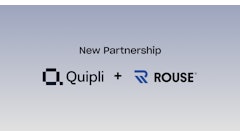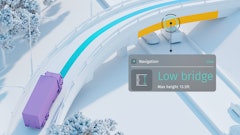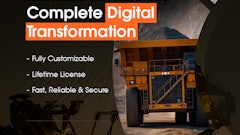
The equipment rental industry is undergoing a substantial transformation. In an industry characterized by reliance on availability, speed, and reliability, traditional processes often struggle to live up to evolving customer expectations. Today's customers do not expect just availability; they expect a frictionless experience and reliable service that matches the convenience that they have become familiar with in other industries, forcing rental businesses to rethink how they operate.
At the heart of this evolution lies rental software. These solutions streamline inventory management, automate bookings, and provide transparent action reports and workflows, which serve to remove operational roadblocks to growth. Most importantly, it focuses on growth by increasing utilization, establishing alternative revenue streams, and allowing companies to confidently grow into new markets.
Operational Hurdles
Growing an equipment rental marketplace requires more than simply adding inventory to your fleet or operating in new locations. With growth, operational demands ramp up and expose challenges that can greatly affect profits and customer satisfaction. Common challenges include:
With so much competition in the rental landscape, your customers’ loyalty to your business hinges on consistency in service.
1. Deciding When and Where to Expand
Expanding to a new market too quickly or in a less-than-favorable situation can lead to unnecessary spending on assets, based on miscalculation. On the other hand, entering too late means competitors could solidify their market position successfully. All businesses will weigh various factors about local demand cycles, competitive landscape, and regional regulation before entering new markets. This means without data or actionable validation, the risk of expansion can outweigh the potential value.
2. Managing Fleets & Inventory Across Multiple Sites
As rental marketplaces grow, so does the complexity of fleet allocation and visibility of assets. Making sure your equipment is at the right place, at the right time, is a careful balance of coordination. Inefficiencies like redeployment, idle equipment, and asset tracking waste costs and can diminish the customer experience.
3. Coping with Unpredictable Demand Patterns
Demand for rental assets is cyclical as a matter of course and is also subject to external factors such as seasonality, economic cycles, and activity drawn from a given industry. Operating in such a market creates uncertainty and makes long-term planning challenging. If a company preemptively invests in too many rental assets for a high-demand cycle, the capital is tied up. On the other hand, if a company underestimates demand and is not able to provide customers with the rental service, it misses the opportunity to grow and leaves its customers dissatisfied. Accurate forecasting and matching resources to demand is arguably one of the longest-standing problems faced by businesses that intend to grow.
4. Ensuring a Consistent Customer Experience
With so much competition in the rental landscape, your customers’ loyalty to your business hinges on consistency in service. This seems simple enough, but the intricacies of scaling a rental business diminish your ability to provide consistent service. One consequence of a decentralized operation is the likelihood of variations related to wait times, equipment quality, and after-rental support. Customers expect to receive the same level of reliability from their rental service regardless of the location and if your service is not consistent, customers lose trust in your brand.
5. Balancing Costs with Profitability
Scaling often demands significant upfront investment in managing equipment, infrastructure, and other rental operations. However, without careful financial planning, businesses may struggle to balance these costs against achievable rental avenues. Operational inefficiencies, delayed returns, and underutilized fleets further aggravate the strain on profitability.
More about scaling on ForConstructionPros.comTransforming Exceptional Service into Revenue Growth - The success of your growth strategy depends on increasing customer acquisition and loyalty at your equipment rental business. Equipment Rental Businesses Should Prepare Now for Potential Obstacles - Regardless of one’s political views, it's tough to argue with the fact that uncertainty resulting from foreign and domestic policy can cause US business growth to grind to a halt. Seven Ways Rental Software Can Help You Work Faster - Rental software has evolved to make it possible for the pace of business to increase exponentially. |
Expanding Your Marketplace
When expanding an equipment rental marketplace, it is about synchronizing a complicated system of demand, supply, and user experience in complement. Rental software is the backbone that makes this adaptation possible, enabling businesses to move beyond manual processes to data-backed, automated, and customer-centric rental operations.
Here’s how rental software helps scale equipment rental marketplaces:
AI-driven recommendation engines analyze customer histories and rental patterns to suggest complementary equipment, bundled packages, or premium upgrades.
1. Data-Driven Expansion & Demand Forecasting
Rental software utilizes advanced analytics to predict demand changes more accurately. After reviewing historical data, demand signals, seasonality, and external factors, a business identifies a timeframe and location to expand. Tools for site intelligence and competitor benchmarking provide even more precision for a market entry strategy that reduces uncertainty, allowing a business to invest where opportunity is greatest.
2. Real-time Fleet & Asset Management
As operations increase, managing a fleet manually becomes a huge challenge. Rental software aggregates equipment data into one location so that businesses can see the equipment's location, availability, and utilization levels in seconds. Rental software also aids in real-time performance tracking and alerts businesses to underutilized or idle assets. This will assist businesses in avoiding bottlenecks and ensuring all assets are generating revenue.
3. Market Intelligence for Smarter Growth
Scaling is usually equated with expanding into new geographies or expanding service offerings. Rental software that provides features that evaluate potential demand density, competitor fleet availability, and price benchmarks prior to making investments in resources should help the expansion decision process. Business owners will be able to move forward with actionable intelligence, not just intuition, thereby reducing risks and accelerating the path to profitability in new markets.
4. Elevating Customer Experience through Digital Touchpoints
Customers today expect speed, transparency, and convenience at every stage of their rental journey. Rental software addresses this demand through online booking portals, mobile apps, and automated communication channels. Customers can check real-time availability, reserve equipment instantly, sign contracts electronically, and make secure digital payments, all without friction. This enhanced accessibility increases customer satisfaction and loyalty, fostering a consistent, frictionless customer journey.
5. Intelligent Pricing & Revenue Optimization
Profitability hinges on the ability to optimize pricing dynamically while maintaining competitiveness. Look for features like dynamic pricing algorithms that adjust rates in real time based on factors such as demand, seasonality, and regional supply in rental software solutions. This actionable data should help ensure peak-period revenue maximization while preventing assets from sitting idle during off-peak times. With utilization reports and performance analytics, businesses can thus make informed decisions about which assets to expand, retire, or reposition.
6. AI-powered Upselling & Cross-selling
AI-driven recommendation engines analyze customer histories and rental patterns to suggest complementary equipment, bundled packages, or premium upgrades. For instance, a customer renting excavation machinery could be prompted with related safety gear or support equipment, streamlining procurement while boosting revenue per transaction. This not only enhances margins but also positions the business as a trusted partner offering holistic solutions.
Critical Factors to Keep in Mind Before Scaling
Rental software plays a vital role in scaling the equipment rental marketplace, but its success depends on how thoughtfully it is integrated and aligned with long-term growth strategies. Consider these key factors before taking the leap.
Scaling an equipment rental marketplace is as much about tactical foresight as it is about operational competence.
1. Invest in Scalable Rental Software
When selecting the right foundation, businesses typically weigh SaaS, Self-hosted, or Open-source solutions. While each solution brings unique benefits to the table, self-hosted software generally strikes the optimal balance, providing scalability, customizability, and complete control over data and infrastructure.
2. Balance Automation with Human Oversight
Businesses must leverage automation for repetitive tasks, such as fleet tracking, invoicing, and compliance management, while ensuring human support remains accessible where personalized solutions are required. This balance creates operational efficiency without compromising customer trust.
3. Safeguard Data & Customer Privacy
The sensitive operational and customer data collected grows exponentially as the marketplace grows. Without a clear strategy for cybersecurity, encryption, and compliance with regional data protection laws, scaling efforts and user confidence may erode due to security breaches or regulatory penalties. Thus, sustaining customer trust and long-term growth demands proactive investment in strong security frameworks.
4. Continuously Monitor ROI
Businesses should continuously measure how each technological investment contributes to efficiency, utilization, and profitability. Regular ROI analysis ensures that resources are allocated wisely, identifies underperforming tools, and guides data-driven decisions, ensuring every investment supports sustainable growth and long-term success.
5. Optimize User Experience Across Platforms
Delivering a seamless, intuitive experience across all platforms is essential as users interact via web, mobile, and other devices. Responsive design and intuitive navigation enhance user experience, increase engagement, and foster loyalty, inevitably driving repeat rentals and supporting sustainable marketplace growth.
Scaling an equipment rental marketplace is as much about tactical foresight as it is about operational competence. Robust rental software serves as the lynchpin, empowering businesses to optimize their rental operations, anticipate demand, and deliver a coherent user experience across the globe. Yet, growth is steadily sustainable only when innovation is partnered with deliberate governance, balancing automation with human oversight and keeping a check on ROI. Hence, businesses that embrace technology efficiently stand to secure a lasting competitive advantage in this increasingly competitive equipment rental industry.




















